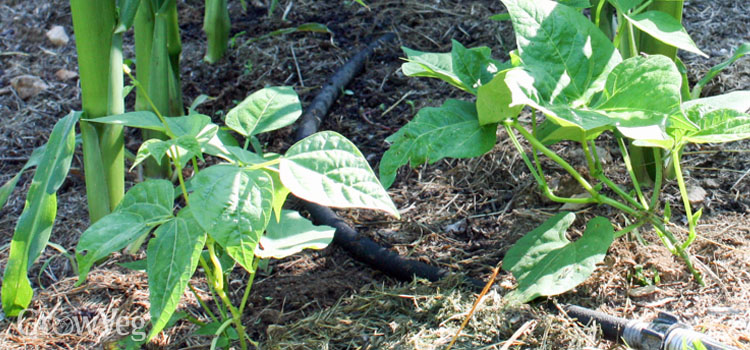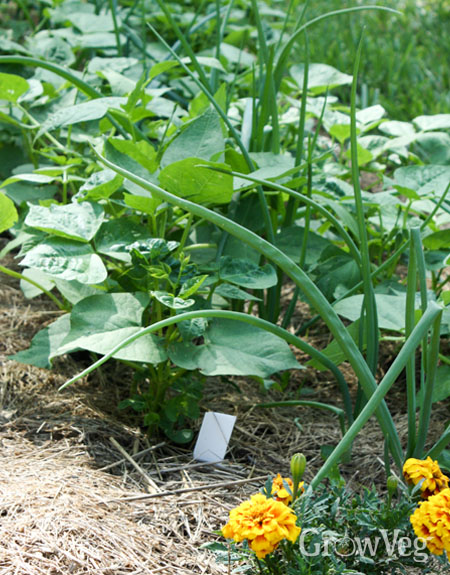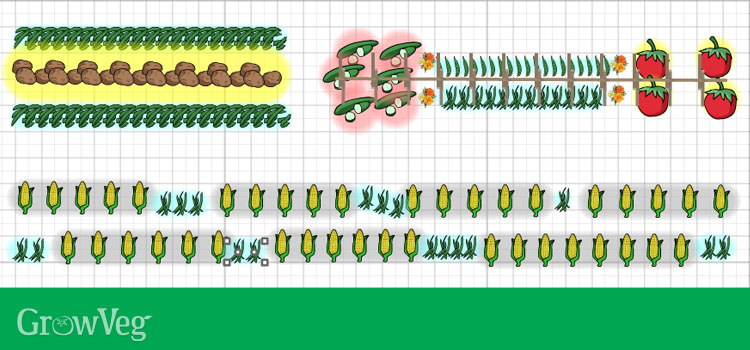Lima Bean Companion Plants: The Ultimate Guide To Growing Healthy And Productive Beans
Lima Bean Companion Plants: The Ultimate Guide to Growing Healthy and Productive Beans
Lima beans are a delicious and nutritious legume that can be grown in most gardens. They are relatively easy to care for, but there are a few things you can do to help them thrive. One of the most important things is to plant them with the right companion plants.
Companion planting is a gardening practice of planting certain plants together to benefit each other. Some plants help to deter pests, while others improve the soil or provide nutrients. When you choose the right companion plants for your lima beans, you can help them grow healthy and productive.
In this guide, we will discuss the best companion plants for lima beans. We will also cover some of the reasons why companion planting is beneficial and how to choose the right plants for your garden.
Why Companion Planting Matters
There are many reasons why companion planting is beneficial for lima beans. Some of the most important benefits include:
- Disease and pest control: Many companion plants help to deter pests and diseases that can affect lima beans. For example, marigolds and nasturtiums are known to repel aphids, while basil and rosemary help to keep away bean beetles.
- Improved soil health: Some companion plants, such as clover and peas, can help to improve the soil by fixing nitrogen. Nitrogen is an essential nutrient for plant growth, and by fixing it in the soil, companion plants can help to provide lima beans with the nutrients they need to thrive.
- Increased pollination: Some companion plants, such as tomatoes and peppers, attract pollinators such as bees and butterflies. These pollinators help to pollinate lima beans, which can lead to increased yields.
- Reduced competition for resources: By planting companion plants that have different root systems and growth habits, you can help to reduce competition for water, nutrients, and sunlight. This can help your lima beans to grow healthier and more productive.
Choosing the Right Companion Plants
When choosing companion plants for lima beans, there are a few things you need to keep in mind. First, you need to consider the size of the plants. Lima beans can grow quite tall, so you need to choose companion plants that will not shade them out. Second, you need to consider the growth habit of the plants. Lima beans are a vining plant, so you need to choose companion plants that will not climb over them.
Some of the best companion plants for lima beans include:
- Carrots: Carrots help to deter the carrot fly, a common pest of lima beans.
- Cucumbers: Cucumbers help to attract pollinators, which can help to increase the yield of lima beans.
- Melons: Melons help to suppress weeds, which can reduce competition for water and nutrients.
- Potatoes: Potatoes help to repel the Mexican bean beetle, a common pest of lima beans.
- Sunflowers: Sunflowers help to attract pollinators and provide shade for lima beans.
Avoiding Poor Companion Plants
There are a few plants that you should avoid planting near lima beans. These include:
- Alliums: Alliums, such as garlic, onions, and chives, can stunt the growth of lima beans.
- Beetroot: Beetroot can compete with lima beans for nutrients.
- Kale: Kale can suppress the growth of lima beans.
- Onions: Onions can emit chemicals that can stunt the growth of lima beans.
- Peppers: Peppers can compete with lima beans for water and nutrients.
Conclusion
By planting the right companion plants with your lima beans, you can help them to grow healthy and productive. By following the tips in this guide, you can choose the best companion plants for your garden and enjoy a bountiful harvest of lima beans.
Lima beans are a delicious and nutritious legume that can be grown in many different climates. When planting lima beans, it is important to consider companion planting. Companion planting is the practice of planting certain plants together to benefit each other. Some good companion plants for lima beans include:
- Corn: Corn provides shade for lima beans, which can help to protect them from the hot sun.
- Cucumbers: Cucumbers and lima beans both benefit from the same type of soil and water conditions.
- Marigolds: Marigolds help to repel pests that can damage lima beans, such as aphids and beetles.
- Potatoes: Potatoes help to suppress weeds that can compete with lima beans for nutrients.
- Summer savory: Summer savory helps to deter bean beetles, which can be a major pest of lima beans.
For more information about lima bean companion plants, please visit Gardenia Inspiration. This website has a comprehensive list of companion plants for lima beans, as well as information on how to plant and care for these plants.
FAQ of lima bean companion plants
Here are the 5 most frequently asked questions about lima bean companion plants, along with valuable insights and solutions:
- What are good companion plants for lima beans?
Some good companion plants for lima beans include:
* Marigolds: Marigolds help to repel pests, such as aphids and whiteflies.
* Cucumbers: Cucumbers help to improve the flavor of lima beans.
* Onions: Onions help to repel root knot nematodes, which can damage lima bean roots.
* Potatoes: Potatoes help to suppress weeds.
* Spinach: Spinach helps to improve the nitrogen content of the soil, which can benefit lima beans.
- What are bad companion plants for lima beans?
Some bad companion plants for lima beans include:
* Peas: Peas and lima beans are both legumes, and they compete for nutrients in the soil.
* Squash: Squash can harbor pests that can also damage lima beans.
* Tomatoes: Tomatoes can attract pests that can also damage lima beans.
* Cabbage: Cabbage can suppress the growth of lima beans.
* Melons: Melons can compete with lima beans for water and sunlight.
- How far apart should lima bean plants be planted?
Lima bean plants should be planted 2-3 feet apart. This allows them enough space to grow and spread their roots.
- How much water do lima bean plants need?
Lima bean plants need about 1 inch of water per week. They should be watered deeply, so that the water reaches the roots.
- What are some common pests and diseases that affect lima beans?
Some common pests and diseases that affect lima beans include:
* Aphids: Aphids are small, sap-sucking insects that can damage lima bean plants.
* Whiteflies: Whiteflies are small, winged insects that can damage lima bean plants.
* Root knot nematodes: Root knot nematodes are microscopic worms that can damage lima bean roots.
* Blight: Blight is a fungal disease that can cause lima bean leaves to wilt and die.
* Fusarium wilt: Fusarium wilt is a fungal disease that can kill lima bean plants.
To control pests and diseases, it is important to practice good garden sanitation. This includes removing weeds, dead plants, and any other plant debris from the garden. You should also inspect your lima bean plants regularly for signs of pests or diseases. If you find any problems, you can treat them with insecticidal soap, neem oil, or other organic pesticides.
Image of lima bean companion plants
Here are 5 different images of lima bean companion plants from Pinterest:
- Image 1: Lima beans and corn. Corn provides support for the lima bean vines, and the lima beans help to fix nitrogen in the soil, which benefits the corn.

- Image 2: Lima beans and sunflowers. Sunflowers attract beneficial insects that help to control pests, and they also provide shade for the lima beans.

- Image 3: Lima beans and potatoes. Potatoes help to suppress weeds, and they also provide a good source of shade for the lima beans.

- Image 4: Lima beans and celery. Celery helps to repel pests, and it also provides a good source of nutrients for the lima beans.

- Image 5: Lima beans and summer savory. Summer savory helps to repel pests, and it also helps to improve the flavor of the lima beans.

Post a Comment for "Lima Bean Companion Plants: The Ultimate Guide To Growing Healthy And Productive Beans"